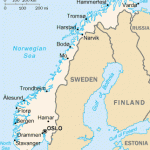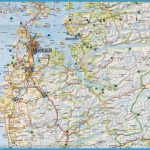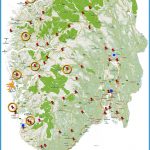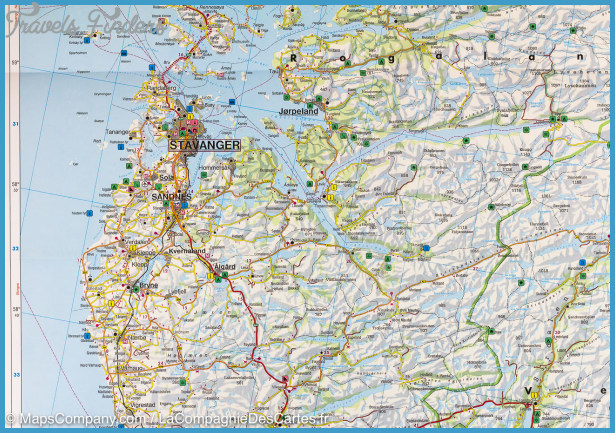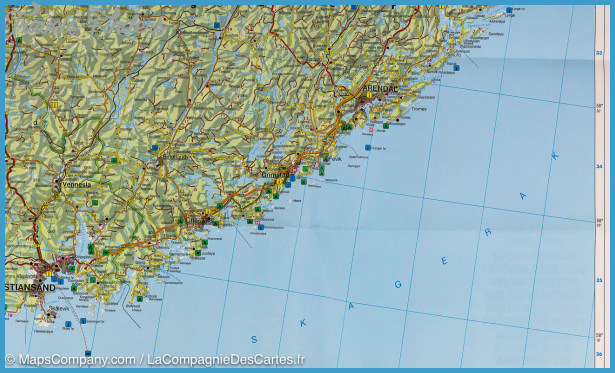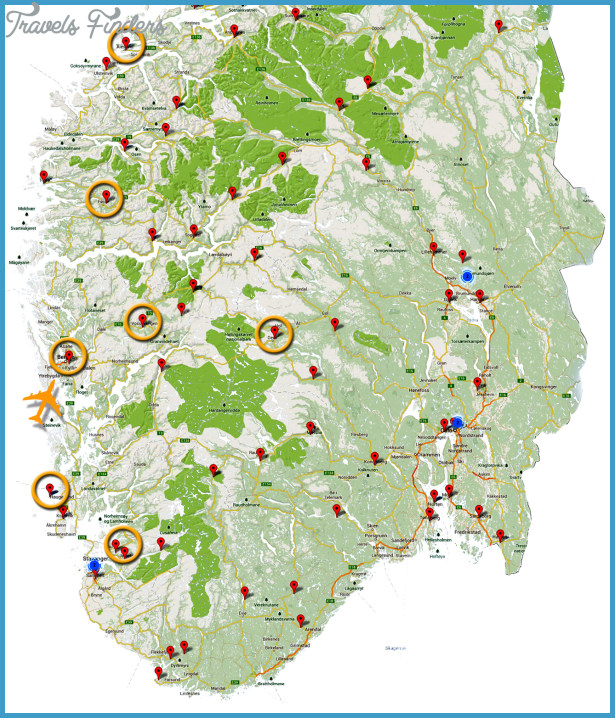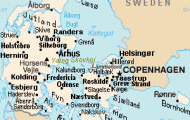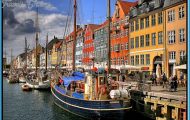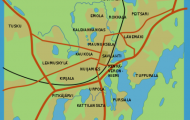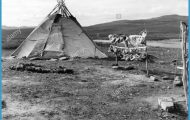Bergen, situated on the inner reaches of the Byfjord, is Norway’s second largest city and principal port on the Norwegian W coast (with a considerable merchant fleet and several large shipyards). It is the
View of Bergen from the Fjellvei Bryggen, Bergen administrative capital of the district of Bergen and the county of Horda-land, the see of the Lutheran bishop of Bjorgvin and has a university and a commercial college. Surrounded by a ring of heights up to 643 m (2110 ft), largely forest-covered, with houses climbing upthe lower slopes, Bergen is one of the most attractive towns in Norway. In spite of its northern latitude (60°24′ N a bit farther N than the southern tip of Greenland), its humid and unusually mild climate enables almostall the usual deciduous trees of Central Europe to flourish and gives it a rich growth of vegetation. Bergen is noted for its high rainfall (over 2000 mm (80 in.) annually, compared with some 750 mm (30 in.) in Oslo); this is a result of its maritime climate and its mountains.
The oldest parts of the town lie around the busy harbour, Vagen, and extend up the slopes of the Floyfjelto the NE. Like most Norwegian towns, Bergen has suffered frequently from devastating fires, particularly those of 1 702 and January 1 91 6; in the 1 91 6 fire several hundred houses in the timber-built commercial district to the S of Vclgen were destroyed. These repeated destructions have left little of the old Bergen, and the pattern of the town is now set by the stone buildings and wider streets of more modern times. The narrow lanes known to the local people as smug have all but disappeared, and only in the northern districts of Skuteviken and Sandviken are there still a few of the old warehouses on the seafront (sogarder) once so characteristic of Bergen large wooden buildings with a crane, on the harbour front. Unfortunately many of the still surviving old warehouses were destroyed in great fires in July 1955 and February 1 958.
HISTORY. About 1070 Olav Kyrre granted municipal status to Bjorgvin (hill pasture), then a port settlement of some importance on the Eside of VSgen. The town developed rapidly as an occasional royal residence. In 1233 Hakon HSkonsson’s hereditary right to the throne was recognised at a general assembly here, and by 1240 Bergen was formally declared the capital of Norway in place of Trondheim. As early as 1236 there were permanent German trading establishments in Bergen, but the town’s rise to prosperity began with the establishment of a counting-house” of the Hanseatic League, first recorded in 1343. By virtue of a privilege granted by the Danish kings, under which the people of the northern territories were required to bring the produce of their fisheries to Bergen and to no other port, the German merchants soon gained control of all Norwegian trade. Their employees lived in a special quarter of the town on the German Bridge (Tyskebryggen), with sixteen long narrow houses which doubled as warehouses. Each house was controlled by a bygherre and was divided into several stuer (rooms), each of which belonged to a particular owner. In 1599 the power of the
Hanseatic League was broken by the feudal lord Kristofer Valkendorf, but the counting-house remained in existence for another 200 years, until in 1764 the last stue was sold to a Norwegian.
Throughout its history the prosperity of Bergen has been based on shipping and commerce, especially fish and fish products. In the 1 7th c. Bergen was still of much greater commercial importance than Copenhagen, and even at the beginning ofthe 1 9th c. it had a larger population than Kristiania (Oslo). Right into the 20th c. it remained Norway’s principal fishing port, and fish and fish products still figure importantly in its trade. In more recent years the establishment of large fishing companies and numerous canning and preserving plants nearer the fishing grounds has promoted the development of other fish marketing towns; but in spite of this Bergen’s outgoing trade (including steel and machinery among much else) is exceeded only by that of Oslo. During the Second World War Bergen suffered considerable damage, and among the buildings destroyed was the old Theatre in Sverres Gate Norway’s first theatre which was founded in 1851 by the famous fiddler Ole Bull, and of which Ibsen (1851 7) and Bjornson (1 858-60) were directors.

